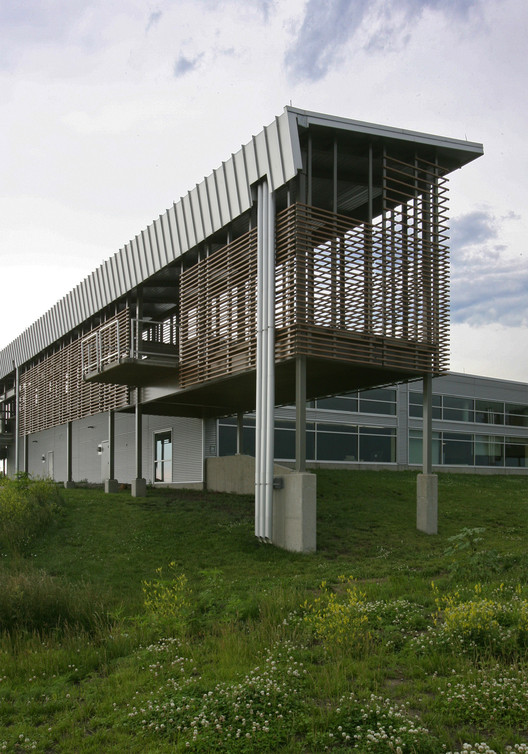
-
Architects: Multistudio
- Area: 46000 ft²
- Year: 2009
-
Photographs:Michael Spillers , Darren Whitley

Text description provided by the architects. The Center for Innovation and Entrepreneurship houses an incubator space for start-ups specializing in agricultural research as well as an academic teaching and research facility for related academic fields. These programs are joined by a common collaboration space with shared equipment labs that can be used for informal meeting, and teaming between the private sector incubator tenants and the academic researchers.

The design syntax marries agricultural influences from the region and the scientific processes within. The machine-like metallic skin is penetrated by wood-clad spines that transfer daylight and intake air into the interior spaces. Mechanical units are housed on the spine’s exterior mezzanines. This parti emphasizes the importance of daylight and fresh air for laboratory work and establishes a connection between natural systems and the environmentally-controlled interior lab systems.

The building is designed to support collaborative research and development between the academic programs and the private sector research companies. Shared Instrument Rooms, equipped with high-end molecular research equipment and clean room, support both entities as well as outside academic and private sector partners. Research environments on both sides feature shared work spaces with generous daylight and views - designed to enhance interdisciplinary efforts.

The building sits on the edge of the campus amidst research crops, and roots itself in the earth with naturally weathering materials: concrete, corrugated metal siding, and wood. It is a part of the landscape, and with its modular construction it is prepared to grow for future expansion.

Sustainable initiatives include deep day lighting, enhanced by light shelves and building orientation to reduce energy loads. Open office environments enhance access to light and views, ventilation effectiveness, and construction economy. Storm water is filtered through bioswales and returned to the water table. The high performance thermal envelope with high efficiency HVAC systems significantly reduces energy consumption as does the high albedo roofing and siding and screening at the western exposure.
























